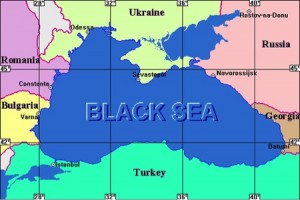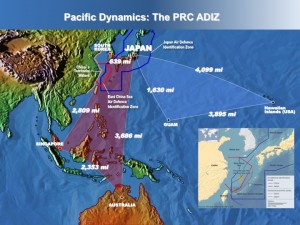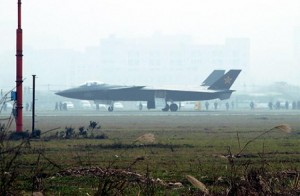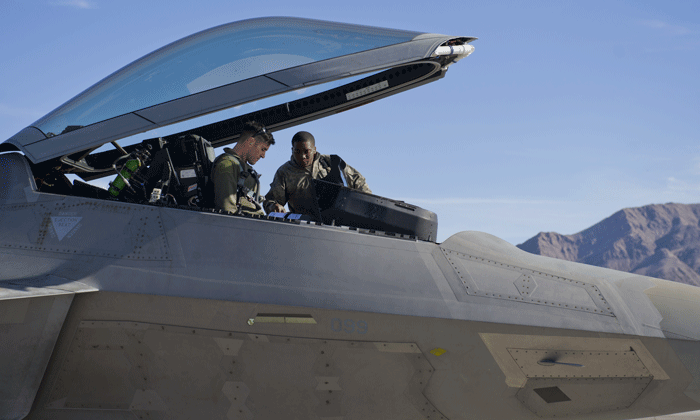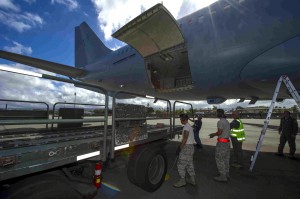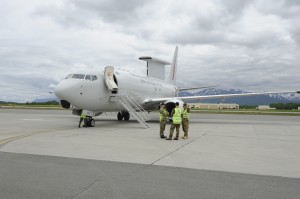2014-03-18 By Ed Timperlake
A recent news event triggered some thinking about the challenges of working within constrained waters. The news event was that the USS Tuxtun was crossing the Dardanelles en route to the Black Sea.
According to a Russian news source (with a video contained within of the ship underway):
The Dardanelles is a narrow stretch of water in Turkey that separates Europe and Asia.
The Truxton still has to pass through the Bosphorus Straights in Istanbul before it reaches the Black Sea.
The Truxton is part of the Arleigh Burke class of destroyer and is among the largest destroyers ever built for the US navy.
It is designed as a multi-role warship with anti-aircraft, anti-submarine and anti-surface capabilities.
The ship is a very capable naval platform.
“The 53rd Arleigh Burke-class destroyer, Truxtun will be able to conduct a variety of operations, from peacetime presence and crisis management to sea control and power projection.
Truxtun will be capable of fighting air, surface and subsurface battles simultaneously and contains a myriad of offensive and defensive weapons designed to apply maritime power to protect U.S. vital interests in an increasingly interconnected and uncertain world.” (http://www.navy.mil/submit/display.asp?story_id=44599)
This is a distinct improvement on earlier times where the previous Navy ship in the Black Sea,a Frigate, the USS Taylor ran aground and the Captain appropriately relieved of his command. Ironically the USS Taylor and USS Mount Whitney were in the Black Sea to support Russia in their Olympic moment.
The Black Sea and the potential steaming area for the USS Truxtun to exercise “freedom of navigation is depicted on the Black Sea map below.
The ship is being sent on a peaceful mission.
But it is a warship.
Anywhere a Navy Ship goes it would be prudent for any adversary to know that there is the high probability the character of US Navy World War II Fleet Admiral Nimitz goes with it.
There is a great quote about Nimitz’s personal leadership in World War II. His chief of staff Raymond Spruance said of Nimitz, that he “… never knew what it ment to be afraid of anything.” (Neptune’s Inferno, The U.S. Navy at Guadalcanal’ James d. Hornfischer).
The Challenges of Operating in the Black Sea
The Black Sea, Area is 168,496 sq miles ringed by the following countries:
Bulgaria, Size of Tennessee with 6.9 million people
Romania, slightly larger than Oregon with almost 22 Million People
Ukraine, slightly smaller than Texas with 44 million people
Russia largest country in the world (1.8 times size of US) 142 Million people
Georgia (Remember them from 2008?), slightly smaller than South Carolina with population of 4.9 Million
Turkey, larger than Texas with a population of 81 million
(Compiled information with CIA fact book population estimates 2014)
The Black Sea as an enclosed body of water and narrow passages of sea can rapidly become a “Beaten Zone” for surface ships.
Such a constrained operating area reminds one of the importance of no platform fights alone; no ship should be sent along without a clear understanding of the threats it might face, and notably, the specific character of threats in constrained operating areas.
There is a blunt direct use of words in ground combat that can signify the possibility of a military disaster, it is up to commanders to determine through their actions that the words mean a battle field defeat or a challenge to be fought through on the way to a victory. The words are “The Beaten Zone” and it is defined in the US military dictionary as “the area on the ground upon which the cone of fire falls.” From Infantry Squad leaders up the Chain-of-Command all engaged must never allow the enemy to establish a “beaten zone” and if trapped in one rapid action is required to evacuate the area while trying to destroy the enemies weapons it is the difference between life and death.
It is a ground term but can also be employed at sea because of the increasing accuracy and lethality of modern weapons.
There are several high traffic strategic waterways and confined seas around the globe that an enemy can create a “beaten zone” for surface ships.
Ships going through the Dardanelles into the Black Sea give us a lesson from history on this very point of what a Beaten Zone can look like for the surface navy.
The Lessons from WWI
Early in the 20th Century, The Battle of Gallipoli, in which the British and French Fleet tried to fight through the Dardanelles captures the problem of war at sea in a confined space that can lead to a military tragedy ashore.
The lessons of Gallipoli resonate to this day, a lot of current military technology had it’s early application in combat during that fateful campaign-(historical reporting taken from wiki):
The use of airpower for the fleet:
- On 17 February 1915, a British seaplane from HMS Ark Royal flew a reconnaissance sortie over the Straits. Two days later, the first attack on the Dardanelles began when a strong Anglo-French task force, including the British battleship HMS Queen Elizabeth, began a long-range bombardment of Ottoman artillery along the coast. The British had intended to utilise Ark Royal‘s eight aircraft to spot for the bombardment, but harsh conditions rendered all but one of these, a Short Type 136, unserviceable
Blinding the enemy:
- On 18 March 1915, the main attack was launched. The fleet, comprising 18 battleships with a supporting array of cruisers and destroyers, sought to target the narrowest point of the Dardanelles, where the straits are 1 mile (1.6 km) wide. Despite some damage sustained by ships engaging the Ottoman forts, minesweepers were ordered to proceed along the straits. According to an account by the Ottoman General Staff, by 2:00 p.m. “all telephone wires were cut, all communications with the forts were interrupted, some of the guns had been knocked out in consequence the artillery fire of the defence had slackened considerably
The impact of Mines:
- The French battleship Bouvet was sunk by a mine, causing it to capsize with her crew of over 600 still aboard. Minesweepers manned by civilians, under the constant fire of Ottoman shells, retreated, leaving the minefields largely intact. HMS Irresistible and HMS Inflexible were critically damaged by mines, although there was confusion during the battle about the cause of the damage—some blamed torpedoes. HMS Ocean, sent to rescue the Irresistible, was also damaged by an explosion, and both ships eventually sank. The French battleships Suffren and Gaulois were also damaged; the ships had sailed through a new line of mines placed secretly by the Ottoman minelayer Nusret ten days before. The losses forced de Robeck to sound the “general recall”
Authors note almost eight decades later:
On the morning of 18 February 1991, during Operation Desert Storm, Princeton was patrolling 28 nautical miles (52 km) off Failaka Island in the Persian Gulf, on the west side of the decoy U.S. Marine and naval invasion forces afloat. Two Italian-made MN103 Manta bottom-mounted influence mines detonated, one just under the port rudder and the other just forward of the starboard bow, most likely a sympathetic detonation caused by the first explosion. The blasts cracked the superstructure buckled.three lines in the hull, jammed the port rudder, flooded the #3 switchboard room through chilled water pipe cracks, and damaged the starboard propeller shaft.
A reactive enemy ground commander can seize the moment:
- “Men, I am not ordering you to attack. I am ordering you to die. In the time that it takes us to die, other forces and commanders can come and take our place.” Mustafa Kemal Ataturk LtCol commanding. All agreed that the most effective form of defense was to hold the high ground on the ridges of the peninsula but there was disagreement as to where the enemy would land and hence where to concentrate their forces. Mustafa Kemal, a 34-year-old lieutenant colonel familiar with the Gallipoli peninsula from his operations against Bulgaria in the Balkan War, believed Cape Helles (the southern tip of the peninsula) and Gaba Tepe would be the two most likely areas for landing. In the case of the former, Kemal believed that the British would use their navy to command the land from every side, which the tip of the peninsula would allow; at Gaba Tepe, the short distance to the eastern coast meant forces could easily reach the Narrows.
A Raid can have significant tactical consequences:
- A period of bad weather slowed the initial phase but by 25 February the outer forts had been reduced and the entrance cleared of mines. After this, Royal Marines were landed to destroy guns at Kum Kale on the northern Asian coast and at Sedd el Bahr on the southern tip of the Gallipoli Peninsula, while the naval bombardment shifted to batteries between Kum Kale and Kephez.
Undaunted individual courage was the code regardless of leadership bungling:
|
Gallipoli casualties (not including illness) |
||||
|
Dead |
Wounded |
Missing |
Total |
|
|
Ottoman Empire[5] |
56,643 |
107,007 |
11,178 |
174,828 |
|
United Kingdom[223] |
34,072 |
78,520 |
7,654 |
120,246 |
|
France[224] |
9,798 |
17,371 |
– |
27,169 |
|
Australia[225] |
8,709 |
19,441 |
– |
28,150 |
|
New Zealand[225] |
2,721 |
4,752 |
– |
7,473 |
|
British India[225] |
1,358 |
3,421 |
– |
4,779 |
|
Newfoundland[225] |
49 |
93 |
– |
142 |
|
56,707 |
123,598 |
7,654 |
187,959 |
|
Every nations can honor their veterans and recognize the tremendous sacrifice:
- The defeat of the British fleet had given the Ottomans a morale boost the day would later come to be celebrated in Turkey as a great victory
- The campaign is often considered as marking the birth of national consciousness in Australia and New Zealand and the date of the landing, 25 April, is known as “Anzac Day“. It remains the most significant commemoration of military casualties and veterans in those two countries, surpassing Remembrance Day (Armistice Day)
Greatness is recognized by one’s words, a tribute to those ANZACs who died in Gallipoli, this is inscribed on the Atatürk Memorial in Turakena Bay, Gallipoli and at the Kemal Atatürk Memorial, Canberra:
- “Heroes who shed their blood and lost their lives! You are now lying in the soil of a friendly country. Therefore rest in peace. There is no difference between the Johnnies and Mehmets to us where they lie side by side here in this country of ours. You, the mothers, who sent their sons from far away countries wipe away your tears; your sons are now lying in our bosom and are in peace. After having lost their lives on this land they have become our sons as well.”
- “Centuries rarely produce a genius. Look at this bad luck of ours, that great genius of our era was granted to the Turkish nation.”
David Lloyd George, Prime Minister of the United Kingdom speaking about Kemal Ataturk
Closed Water Operational Challenges
Fortunately, for the US Navy in the Asian Pivot, the quest for finding Malaysia Air Flight MH 370 has given the world a vivid example of the size of Oceans. Combining the Pacific, South China Sea, East China Sea and the Indian Ocean and there is significant at sea maneuvering space for fast ships going in harm’s way.
However, like the Gallipoli campaign there are several vital relatively closed bodies of water around the globe in which ships can be easily found and attacked.
Thankfully with the focus of the US Navy on being the best “Blue Water Fleet” in the world, (with the exception of the budgetary and combat draining diversion of the Littoral Combat Ship), the Peoples Republic of China, creating a ‘Beaten Zone” against US and Allied ships is a difficult if not impossible task.
This is especially true if an Air/Sea Battle plan uses the expanse of Pacific Ocean for our Carrier Battle Groups (CBG), Gator Navy air assets and Asian Ally air bases to launch attacks from many distributed vectors employing proven weapons to “turn out their lights” and then sink the Peoples Liberation Army Navy and shoot down any PLAAF aircraft “feet wet” and take out all the ground tracking and launch pads.
It takes a leap faith to not understand that the US Navy/Air Force/Marine and Allied teams would be ruthless enough, and technologically capable to blind an enemy taking out their satellites, and air and surface target acquisition systems.
Silly drawings of untested PLA IRBMs (e g DF21 et al) showing it’s extended range with the assumption that it knows where a maneuvering Carrier Battle Group is let alone where it will be is way overly simplistic. Yet even at the US Naval War College some Professors argue that PLA over water ISR capability is absolute.
Many have argued about the end of the Navy in the Pacific because of a theoretical application of the famous Net Assessment’s Revolution in Military Affairs which is:
Precision guided munitions with remote sensors, along with the other revolutionary way ahead, Information war. Take out the sensors and a lot of PLA “precision” threats are not very accurate but rather simply untested capabilities and asserted not proven arguments
However it is true that when ships are constrained in maneuvering space, or forced to approach a coast then an enemy has a much better chance of bring precision guided munitions to the fight.
An enemy can create a “Beaten Zone” and in that situation it is even more critical to know where when and how to avoid the threat or if necessary blind and then attack an enemy.”
Whatever side has the better pre-hostilities information has a higher chance of victory.
Right now this the fundamental military challenge of sending the USS Truxtun into the Black Sea.
One of the great lessons from the US Navy Top Gun program was the saying “you fight like you train.” Combining that insight with Secretary Rumsfeld’s statement that “you go to war with the Army you have,” events in the current perilous world situation between Russia and Ukraine come into focus, because it is also true that the Russians and Ukraine military may go to war with the armies they have.
First principle, just like the saying avoid ground wars in Asia, the US must stop way short of any consideration of ground combat in the Ukraine V Russia fight. The American people, get this to their very core as reflected by many polls that indicate around 12% support boots on the ground. Even if the if the US was manipulated into combat by some with a hidden agenda without a declaration of war
it is still not a US “Big Army” fight independent of what the Chairman has said:
“Chairman of the Joint Chiefs of Staff of the United States General Martin Dempsey has claimed that in the case of an escalation of unrest in Crimea, the U.S. Army is ready to back up Ukraine and its allies in Europe with military actions. “
It will be left to future historians to figure out why a few days after the US Chairman of the Joint Chief of Staff postured over US Army support for Ukraine that a prominent Russian TV host (backed by the Putin Administration) lashed out on a prominent TV show.
Russia is the only country capable of turning the United States into “radioactive ashes.”
This is not an idle threat by Russia especially with the possibility of Tac Nukes in their Black Sea Fleet;
The current Ukraine crisis is the worst of both worlds. Combining significant threats with the failure of strategic intelligence about Russian capabilities and intentions is of significant concern.
It has been widely reported that there was a breakdown in US Intelligence Community on US strategic warning of Russia making a move on Ukraine. Regardless of DNI Clapper’s public statements some very good reporting is coming out about a strategic intelligence failure of the first order. It will take time to see the real facts of the IC’s performance.
Overtime, Congress is fully capable of seeing that if NSA can read the private e-mails of the Presidents of Brazil and Germany what did they do in the case of Russian and Ukraine leaders?
This should be a very high priority work in progress to bring disclosure to the American people; after all they paid for all this. With the revelations of the overzealous and highly inappropriate attack on world leaders by NSA, and early strategic miscalculations about Russian intentions a continuing bi-partisan serious effort by Congress to address “all things NSA” is important.
Finally, one point, for the DNI, if you are explaining you are losing and if you have to go on a local DC radio show to say “not”…well enough said
Crafting a Combat Response
As a practical matter with American forces possibly in harm’s way up close real time intelligence is need by military forces not analytical papers from the CIA and NSA ineptitude. Consequently with events moving quickly sending the USS Truxtun, a Burke class destroyer, into the Black Sea must focus some important 21st Century military capabilities while remembering some of the lessons learned from the last Century
Since the IC breakdown in strategic warning the USS Truxtun will have to rely even more on US and Allied ISR assets and reach back to airpower to address any potential threats in the area depicted on the map. The need for ISR linked to offensive air is critical and not intrusive, until it can be very intrusive. There are many ways to “look and listen” to collect real world information on the actual movement of all air, land and sea military forces of both Russia and Ukraine.
From World War I forward America and our Allies have gotten better and better in overhead collection efforts, from aircraft to UAVs all integrated with existing Satellite coverage.
In addition to the inherent combat capability of the Truxtun, the situation depends on what the US Combat Commander, Air Force General Phillip Breedlove wants to focus on as his core warfighting assets.
There can be F-22s, F-15s and F-16s, from land bases with F/A-18s on the USS George Bush all available to help. In addition to aerial refueling tanker support, the US and allies can have AWACS, Navy E2-Cs, and other patrol planes along with Satellites, and ships (Aegis) and land based surveillance systems with all the data being sent back to his command center.
This entire panoply of combat capabilities spread out over thousands of miles can be brought together as required. It is actually doubtful it will all be necessary and events hopefully will not spiral out of control.
Combat Capabilities in Transition
But it is evident of a large data fusion problem to be both accurate, timely and reactive if any threat to the USS Truxtun is picked up. This is the state of art for the current situation. Let all hope the situation stabilizes.
However, very soon the entire way of thinking and commanding a fighting force will have a game changing aircraft introduced. The F-35 flying with the USMC, the USN, the USAF and allies can make a huge difference in protecting the fleet by both mapping the threat and targeting key elements of the threat as well as part of meeting the challenge of a “beaten zone” at sea.
For the first time in history a single aircraft will have extensive 360 degree reach for the Air-to-Air, Air-to-Ground and EW mission. Each F-35 pilot will move from having situational awareness in the cockpit to situational decision making. This is revolutionary and instead of the current “hub-spoke” air battle management combat engagement it will become a networked distributed system. Each F-35 is a combat “nodes” in a distributed system of nodes that no longer will need fused data coming top down from the command center to update threats. Rather, each F-35 can generate real time threat intelligence up and out from the cockpit.
This capability was demonstrated three years ago in the largest and toughest EW exercise in the world, Northern Edge. It took place over the Gulf of Alaska a very harsh environment it is much like the Black Sea but also larger in scope also the Black Sea has much better weather providing a warm water port for Russia.
Gulf of Alaska, broad inlet of the North Pacific on the south coast of Alaska, U.S. Bounded by the Alaska Peninsula and Kodiak Island (west) and Cape Spencer (east), it has a surface area of 592,000 square miles
http://www.britannica.com/EBchecked/topic/12286/Gulf-of-Alaska
The F-35 is the combat answer to stopping any “Beaten Zone” at sea and if can survive and perform better than any other aircraft in Northern Edge it can survive and bring a 360 AA.AG.EW fighter to the Black Sea and the Islands in the Pacific along the China coast.
Northern Edge 2011 provided the focal point for the restructuring of U.S. power projection forces.
In a robust jamming operating environment, the F-35 radar and distributed aperture system (DAS) separated themselves from the pack, and have initiated a new era in thinking in combat operations.
In short, the Black Sea as a pop up event in the Crimean crisis reminds one of the need to operate effectively in close quarter naval operating areas.
And rather than having to aggregate a gaggle of 20th century capabilities, the F-35 can facilitate a more agile, smaller footprint and more effective shutdown response in such potential combat conditions.
Thus, the national command authority can operate with greater flexibility especially when the USS Gerald R. Ford, CVN-78 can maneuver in Blue Water while reaching out over closely confined sea lanes with F-35Cs on board.
Addendum:
As a Joint Program Office release underscores this is not only about the ability of airpower to operate in a robust EW environment in which cyber conflict is a key dimension but it is about the ability of an airborne capability to support maritime operations.
Participating in Northern Edge for the second time, F-35 Joint Strike Fighter sensor capabilities were tested in Alaska’s premier multi-operational environment from June 13-24, 2011. Hosted by Alaskan Command, Northern Edge is a biennial U.S. Pacific Command exercise that prepares joint forces to respond to crises throughout the Asia-Pacific region.
This year provided an invaluable opportunity to observe the performance of the F-35 JSF systems in multiple robust electronic warfare scenarios.
The AN/APG-81 active electronically scanned array radar (AESA) and AN/AAQ-37 distributed aperture system (DAS) were mounted aboard Northrop Grumman’s BAC 1-11 test aircraft. Making its debut, the AN/AAQ-37 DAS demonstrated spherical situational awareness and target tracking capabilities. The DAS is designed to simultaneously track multiple aircraft in every direction, which has never been seen in an air combat environment.
A return participant, the AN/APG-81 AESA demonstrated robust electronic protection, electronic attack, passive maritime and experimental modes, and data-linked air and surface tracks to improve legacy fighter situational awareness. It also searched the entire 50,000 square- mile Gulf of Alaska operating area for surface vessels, and accurately detected and tracked them in minimal time.
Navy Cmdr. Erik Etz, Deputy Mission Systems Integrated Product Team Lead from the F-35 JSF Program Office, said the rigorous testing of both sensors during NE 2011 served as a significant risk-reduction step for the F-35 JSF program. “By putting these systems in this operationally rigorous environment, we have demonstrated key war fighting capabilities well in advance of scheduled operational testing,” Etz added.
Having the exercise in June had its seasonal weather challenges for system operators to adapt and overcome. Inclement and cloudy weather hampered in-flight visibility. The DAS was significant in providing clear and discernable horizons, and views of ground features and nearby aircraft. It also wasn’t dark enough for testing night vision functions. A surrogate test visor was used for displaying DAS imagery to the operators. “The implications of F-35 JSF sensor systems for air-land-sea battle are immense,” said Peter Bartos, Northrop Grumman’s Test Director.
http://www.jsf.mil/news/docs/20110627_NORTHERNEDGE.pdf
https://sldinfo.com/the-northern-edge-difference-re-structuring-the-strategic-debate/
For an historical look at the land campaign on the Crimean peninsula see Professor Ken Maxwell’s article.
https://sldinfo.com/the-impact-of-crimean-history-the-danger-of-playing-one-upski-with-putin/
Editor’s Note: The source for the Black Sea map is below:
https://www.ceoe.udel.edu/blacksea/geography/index.html


